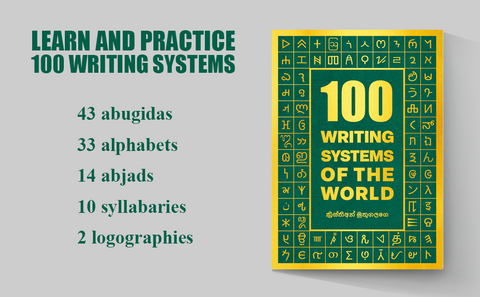Title: Unraveling the Mysteries of Ugaritic Cuneiform: An Ancient Script Rediscovered

Introduction: The Ugaritic cuneiform is a fascinating script that provides valuable insights into the ancient world and the people of Ugarit. This ancient city-state, located in present-day Syria, was a vibrant cultural and trading center during the Late Bronze Age.
1. Script type: Ugaritic cuneiform is an ancient script that belongs to the abjad type. In this script, only consonants are typically represented, with vowels often left unmarked.
2. Writing direction: The Ugaritic cuneiform was written from left to right, a writing direction familiar to modern readers.
3. Creator and invention time: The Ugaritic cuneiform script was created by the people of Ugarit, an ancient city-state on the eastern coast of the Mediterranean Sea. The exact time of its invention is not precisely known, but it is estimated to have emerged around the 14th century BCE.
4. Time period of use: The Ugaritic cuneiform was in use during the Late Bronze Age, from approximately the 14th to the 12th century BCE. It flourished during the height of Ugarit's prosperity and cultural significance.
5. Population and current usage: The Ugaritic language and its cuneiform script have long been extinct, and there are no populations actively using them today. However, the rediscovery and decipherment of the script have provided valuable insights into the history, religion, and culture of Ugarit.
6. Usage area: The Ugaritic cuneiform was primarily used in the ancient city-state of Ugarit, located on the coast of modern-day Syria. Ugarit was a cosmopolitan city, engaging in extensive trade with other civilizations, including Egypt and Mesopotamia.
7. Languages associated: The Ugaritic cuneiform script was used exclusively for writing the Ugaritic language, which belongs to the Northwest Semitic language family. This language is closely related to ancient Canaanite and Hebrew.
Interesting Facts and Historical Significance:
-
Rediscovery and Decipherment: The Ugaritic cuneiform script was rediscovered in the early 20th century during excavations at the ancient site of Ugarit. Its decipherment by scholars, particularly through the work of French archaeologist Claude F. A. Schaeffer, unlocked a wealth of knowledge about the ancient world and the culture of Ugarit.
-
Clay Tablets: Like other cuneiform scripts, Ugaritic cuneiform was inscribed on clay tablets using a wedge-shaped stylus. These tablets were then fired in kilns, which inadvertently preserved them for thousands of years.
-
Religious and Literary Texts: Many of the Ugaritic cuneiform tablets discovered at the site of Ugarit contain religious and mythological texts. These texts shed light on the religious beliefs, rituals, and deities worshipped in Ugarit.
-
Influence on Other Cultures: The Ugaritic language and cuneiform script have had an influence on the development of other ancient languages and scripts in the region, including Phoenician and Hebrew.
Conclusion: The Ugaritic cuneiform script is a remarkable testament to the ancient city-state of Ugarit and its cultural contributions to the ancient world. Through the rediscovery and decipherment of this script, we have gained valuable insights into the history, religion, and language of this once-flourishing civilization. While the Ugaritic language and cuneiform script have faded into history, they continue to be an essential part of our understanding of the ancient Near East and the rich tapestry of human civilization.

Practice Ugaritic and other scripts with our book "100 Writing Systems of the World"!
Discover 100 diverse writing systems from around the globe in one captivating book. Practice writing different scripts with full character charts and essential information provided. Let your imagination soar on the blank right pages as you explore 43 abugidas, 33 alphabets, 14 abjads, 10 syllabaries, and 2 logographic scripts. Dive into numeral systems and even design your own writing system. Immerse yourself in the beauty and diversity of global scripts today with "100 Writing Systems of the World." Unleash your creativity and order now!